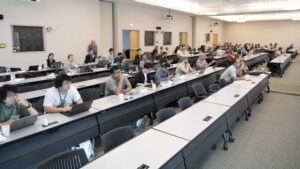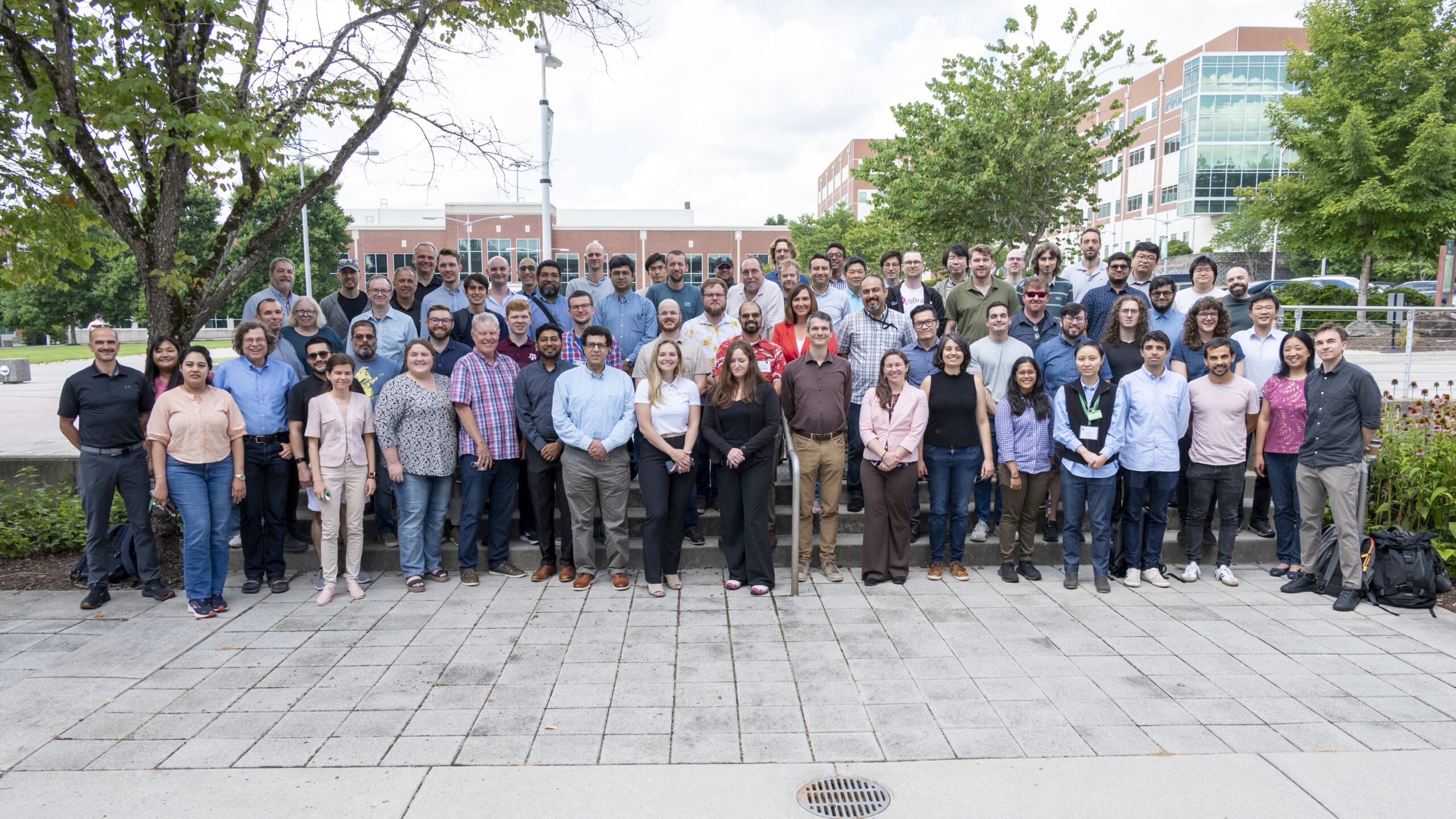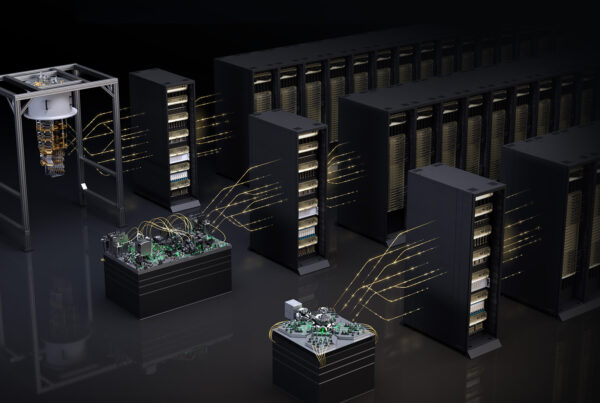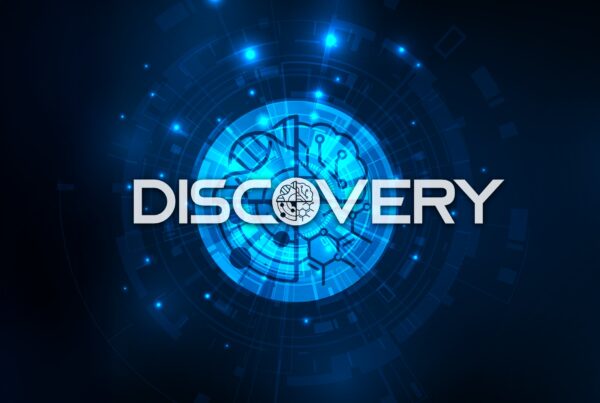The Department of Energy’s Oak Ridge National Laboratory hosted the first Oak Ridge Quantum Systems & Software Workshop (OQSSw) on July 25, bringing together 75 participants from national laboratories, academia and industry. ORNL organizers launched the workshop as the first step toward building a unified software stack for quantum-classical hybrid computing.
Throughout the day, participants teamed up to plan and design ways to connect different parts of quantum computing systems to high-performance computing (HPC) systems to create a practical and easy-to-use open quantum software ecosystem, or openQSE. This is part of a new initiative aimed at creating a community of quantum computer users and developers that combines the strengths of both quantum and traditional computing.

The Oak Ridge Quantum Systems & Software Workshop welcomed 75 attendees for its inaugural event hosted at ORNL on July 25. Photo Credit: Kurt Weiss/ORNL, U.S. Dept. of Energy
The workshop was organized by Amir Shehata, an HPC systems engineer in ORNL’s Science Engagement Section of the National Center for Computational Sciences. It was scheduled at the conclusion of the four-day Quantum Computing User Forum (QCUF) so attendees could spend an extra day to discuss the integration of quantum computing systems into HPC infrastructure.
Collaboration fuels innovation in quantum software
Throughout the morning, workshop attendees participated in talks hosted by industry representatives, including Quantinuum, IBM and Munich Quantum Valley. After lunch, the workshop split into four sessions: resource management and scheduling view, application view, tool pipeline view and quantum platform view. At the conclusion of the sessions, the group came together for a roundtable discussion where participants reviewed the insights, challenges, and opportunities discussed during the four sessions.
“I’ve been involved in the quantum software stack integration and HPC integration for a while,” Shehata said. “I thought it makes sense to collaborate to try and produce a general software stack that is common across the community, instead of everybody doing their own thing. This would accelerate development because, for an HPC center like ORNL, multiple software stacks would place increasing demands on the support staff in a rapidly changing ecosystem, slowing advances in the integration process. Having one common stack that can support a wide range of hardware seemed more logical.”
A unified software stack not only streamlines development and reduces operational burdens at individual labs like ORNL but also has the potential to drive national progress by fostering a collaborative, efficient, and adaptable research environment. The goal is for openQSE to be a unified initiative to bring together vendors, collaborators, labs and universities in building an open community. ORNL is actively forming the openQSE initiative, which will focus on establishing a common set of interfaces that could be implemented, enabling participants to develop their own modules and seamlessly integrate them into the ecosystem. Discussions with vendors, labs and others in the quantum field are underway to outline the architecture and formalize collaboration methods.
Advancing quantum and high-performance computing integration
“The convergence of HPC and quantum offers extraordinary potential to tackle complex challenges in science, industry and beyond,” said ORNL’s Tom Beck, head of the Science Engagement Section. “This potential can only be realized through interoperable software stacks that bridge the gap between classical and quantum paradigms. These stacks form the backbone of progress, enabling seamless collaboration, optimizing workloads and ensuring that both HPC and quantum systems work cohesively to maximize impact. In this convergence, software is not merely a tool — it becomes the key to unlocking new frontiers of innovation.”

The Oak Ridge Quantum Systems & Software Workshop welcomed 75 attendees for its inaugural event hosted at ORNL on July 25. Photo Credit: Kurt Weiss/ORNL, U.S. Dept. of Energy
OpenQSE aims to speed up advancements in quantum software by connecting a rapidly evolving community, creating specialized working groups, and promoting collaboration across different parts of the quantum technology framework. OpenQSE takes a structured approach that includes defining software component categories, organizing software layers, clarifying boundaries and specifying key interfaces. This process aims to create a shared language for design discussions that support modular, vendor-neutral development. By reusing and adapting existing architectures where possible and focusing on critical points of interoperability, OpenQSE drives targeted innovation while ensuring that diverse quantum technologies integrate seamlessly into a unified ecosystem.
“Conversations are already happening, and while many people are working toward the same goals, they’re approaching them in slightly different ways,” Shehata said. “If you take a step back and see the bigger picture, you’ll notice a striking similarity in the ideas being pursued. What we truly need is to bring these people together—not just to exchange ideas at a high level, but to engage in technical discussions about how to seamlessly integrate these diverse components into a cohesive whole.”
UT-Battelle manages ORNL for DOE’s Office of Science, the single largest supporter of basic research in the physical sciences in the United States. DOE’s Office of Science is working to address some of the most pressing challenges of our time. For more information, visit energy.gov/science.






